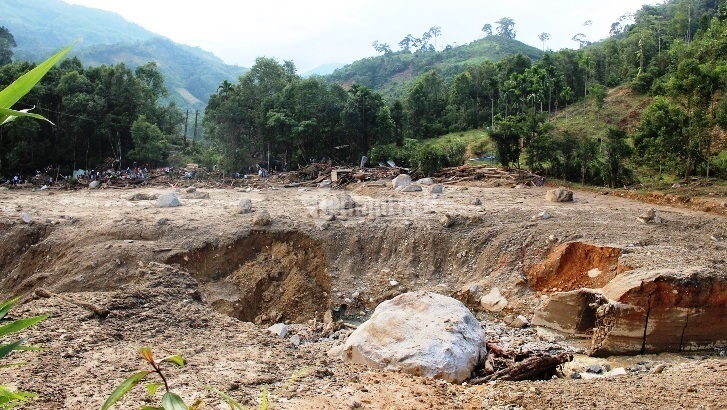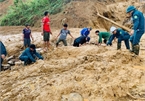Director General of the National General Directorate of Meteorology and Hydrology Tran Hong Thai said that forecasting a flash floods and landslides is based on topographic maps and flash flood and landslide risk zoning maps, combined with rain forecasts from numerical weather models and rain estimates from satellite images, radar and automatic rain measurements.

With the current data and technology, when weather patterns that can cause heavy rains appear, Vietnam can predict large-scale heavy rains in mountainous areas 1-2 days in advance, which allows warnings of the risks of flash floods and landslide in many provinces.
The Ministry of Natural Resources and Environment (MONRE) has asked the National Meteorological and Hydrological Forecasting System to use the most modern flash flood warning products in the world (like the ones in the US) as alert tools.
However, flash floods and landslides only occur in a few points in provinces, and not at the same time. The detailed warnings to districts, communes and high-risk areas just can be given 3 - 6 hours in advance with low certainty.
In addition, the topography in the northern mountainous areas and central region is such that heavy rains causing flash floods and landslides often occur at night, making it difficult to transmit warnings, especially to the people in remote areas.
Because of the complexity, surprise and short term flash floods and landslides, in order to forecast flash floods and landslides at a location, a stream or mountain slope, it is not only necessary to determine the precipitation and give forecasts in detail according to space and time, but also to identify background information about the conditions of flash floods and landslides such as topography, geostructures, weathered crusts, humidity, saturation level, rain thresholds causing flash floods and landslides, and socio-economic activities (traffic, mining, construction and population distribution).
At present, the information is under the management of many different ministries, branches and localities.
The information about forest changes and basin exploitation, for example, is under the management of the Ministry of Agriculture and Rural Development (MARD). Meanwhile, detailed information about transport, birdges and roads is under the management of the Ministry of Transport (MOT), and information on the economy, society, population and population distribution is controlled by people’s committees at different levels.
Even if the rainfall is forecasted exactly, this is still not enough to precisely forecast flash floods and landslides without the background information.
Vu Diep

Helicopters to be used for Quang Nam landslide rescue
Authorities in the central province of Quang Nam have planned to use helicopters in the rescue of eight people who are missing in two landslides.

Another landslide in Quang Nam buried 11 people
Reports of another deadly landslide in central Vietnam have emerged, killing three people and leaving eight missing.